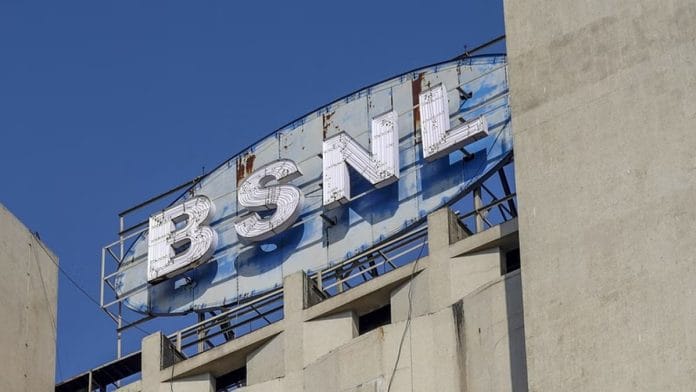The Modi government has come to be known, among several other things, for the large sums of money it commits to creating assets and attracting investment. There are numerous examples of these ranging from the Rs 111 lakh crore National Infrastructure Pipeline to the various Production-Linked Incentive schemes, not counting the highways being built and power lines being laid.
It’s against this backdrop that the government’s decision to yet again bail out the ailing state-owned telecom company BSNL has taken many by surprise. The rise of the private telecom players in India ran almost parallel to the decline of government behemoth BSNL and the smaller MTNL. After almost two decades of neglect that saw these DoT-formed companies run into seemingly insurmountable losses, the government has woken up to execute what appears, at least on surface, a move that runs contrary to its disinvestment regime. And this is why the Union Cabinet’s approval on Wednesday of a Rs 89,047 crore revival package is ThePrint’s Newsmaker of the Week.
Good money sinking?
This is the third bailout for BSNL, taking the total assistance provided to the company to Rs 3.22 lakh crore, all of which has come in the last five years. What has really riled critics of the government is that this seems to be sinking good money after bad.
The argument is that the previous two bailouts were also substantial–Rs 69,000 crore in 2019 and a whopping Rs 1.64 lakh crore in 2022–and yet BSNL’s fortunes have not revived.
A look at the company’s financial results over the last decade or so shows that it had registered a net loss of Rs 8,850 crore in the financial year 2011-12.
Fast-forward to 2021-22, the latest period for which we have full-year’s data, and one finds the net loss has shrunk, but only marginally, to Rs 6,982 crore. This was the case after one bailout of Rs 60,000 crore had already come in.
Compounding commentators’ dismay over the efficacy of bailouts to BSNL were the repeated reports that the company was failing to pay salaries to its employees. There were numerous anecdotal reports of this, but some made the news. In December 2019, Congress MP Shashi Tharoor tweeted to then telecom minister Ravi Shankar Prasad lamenting the fact that BSNL had not paid its employees in November that year.
Since the 2019 bailout package had been approved only in October that year, perhaps that was the reason it hadn’t percolated down to employees just yet. But, dismayingly, it was again reported in June 2020 that employees had not been paid for the month of May 2020. This was repeated in 2021 and also in 2022. Clearly, bailouts are not helping, the critics feel.
Also read: Ailing BSNL gets its 3rd revival package. Rs 89,047 cr allotted, focus on 4G & 5G services
The view in the govt
From the government’s point of view, reviving BSNL (seemingly at whatever cost) aligns with several of its official and unofficial strategies. On the official side, the government has since 2020 been making clear that it will gradually exit from most sectors of the economy, except for a few ‘strategic’ ones.
Telecommunications is one of these strategic sectors, and so making sure at least one public sector company remains in the industry is in keeping with stated policy. If that is kept in mind, then Wednesday’s bailout shouldn’t be too much of a surprise.
The other aspect of official policy is that the government needs companies like BSNL to ensure that communications networks remain robust in far-flung parts of the country. While speaking to reporters about the latest bailout to BSNL, telecom minister Ashwini Vaishnaw said as much.
“The first and second packages brought BSNL out of a very difficult situation to a stable situation. Now time has come when BSNL should be in the league of major players. It should become a player which should bring connectivity to places where normal commercial companies would not be able to. It should be able to provide Digital India services to the weakest of the weak sections. With that thought process, the cabinet today approved a package of Rs 89,047,” Vaishnaw said at a press conference in Delhi.
The latest bailout for BSNL is expected to help the company “provide pan India 4G and 5G services” and “provide 4G coverage in rural and uncovered villages under various connectivity projects”, the government’s press release said.
Now we come to what seems to be the government’s unofficial policy and how bailing out BSNL seems to align with even that. It has been argued earlier that the government is following a sensible policy where it is quietly preventing duopolies from forming in various sectors.
In telecom, one of the steps towards ensuring Reliance’s Jio and Bharti’s Airtel didn’t become too dominant was to ensure the survival of Vodafone Idea through an equity infusion. However, Vodafone Idea remains a relatively smaller player. Helping BSNL revive its fortunes will further break the hold of the top two companies and increase competition in the sector.
A 2008 BSNL commercial featuring Bollywood star Preity Zinta showed how the absence of a landline connection becomes a dealbreaker for the woman seeking a partner. The 40-second ad sums up what the public enterprise, even if debt-laden, means for the government—critical in its scheme of things.
(Edited by Anurag Chaubey)






